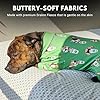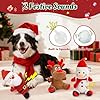Choosing the right cat food can be a daunting task. With so many options available, it’s easy to overlook harmful ingredients that could impact your cat’s health. Knowing what to avoid on labels is crucial for ensuring your feline friend stays healthy and happy. In this article, we’ll explore the cat food ingredients you should steer clear of and how to spot them on packaging. Your cat’s well-being starts with a safe, nutritious diet, and we’re here to guide you through making the best choices.
1. Artificial Colors and Dyes
Why Avoid Them?
Artificial colors and dyes are often used to make food look more appealing. However, they provide no nutritional value and can cause allergic reactions or digestive issues in cats.
Common Names to Look For:
- Red 40
- Blue 2
- Yellow 5
2. Corn and Wheat Gluten
Why Avoid Them?
Corn and wheat gluten are used as cheap fillers in many cat foods. They provide little nutritional value and can be hard for cats to digest. Some cats are also allergic to these ingredients.
Common Names to Look For:
- Corn gluten meal
- Wheat gluten
- Corn starch
3. By-Products
Why Avoid Them?
By-products are parts of animals that are not considered fit for human consumption, like beaks, feathers, or organs. They are less nutritious and may include lower-quality ingredients.
Common Names to Look For:
- Chicken by-product meal
- Meat by-products
- Animal by-product meal
4. Fillers and Carbohydrates
Why Avoid Them?
Fillers such as excessive grains or potatoes are used to bulk up the food without providing essential nutrients. Cats are obligate carnivores, meaning they thrive on protein, not carbs.
Common Names to Look For:
- Soybean meal
- Potato starch
- Rice flour
5. Artificial Preservatives
Why Avoid Them?
Artificial preservatives help extend the shelf life of cat food but can be harmful. Some have been linked to health issues, including cancer.
Common Names to Look For:
- BHA (Butylated Hydroxyanisole)
- BHT (Butylated Hydroxytoluene)
- Ethoxyquin
6. High Levels of Animal Fat
Why Avoid Them?
While some animal fat is necessary for a balanced diet, excessive amounts can lead to obesity and other health problems. Look for natural sources of fat and check that the fat sources are specified.
Common Names to Look For:
- Animal fat (unspecified)
- Rendered fat
7. Sugar and Sweeteners
Why Avoid Them?
Sugar and sweeteners have no nutritional benefit for cats and can contribute to obesity and diabetes. Cats do not have a sweet tooth and do not need sweeteners in their diet.
Common Names to Look For:
- Sugar
- High fructose corn syrup
- Sorbitol
8. Sodium and Salt
Why Avoid Them?
Excessive sodium can lead to high blood pressure and kidney issues in cats. It’s important to keep sodium levels in check to avoid long-term health problems.
Common Names to Look For:
- Salt
- Sodium chloride
- Sodium nitrate
9. Rendered Meats
Why Avoid Them?
Rendered meats are processed from lower-quality animal parts. The process can degrade the quality of the meat, making it less nutritious.
Common Names to Look For:
- Rendered chicken
- Rendered beef
- Rendered animal proteins
10. Unspecified Animal Proteins
Why Avoid Them?
Unspecified animal proteins can come from various sources, some of which might be lower in quality. It’s better to choose foods that specify the source of protein.
Common Names to Look For:
- Animal protein
- Meat protein
- Poultry protein
How to Read Labels Effectively
1. Check the Ingredient List
Ingredients are listed in descending order by weight. Ensure that high-quality proteins are listed first.
2. Look for Named Proteins
Prefer foods with specific animal proteins like chicken, beef, or fish listed in the first few ingredients.
3. Avoid Generic Terms
Generic terms like “meat meal” or “animal fat” can be less specific and indicate lower-quality ingredients.
4. Verify Preservatives
Check for artificial preservatives and opt for products with natural preservatives like vitamin E (mixed tocopherols).
5. Research the Brand
Choose reputable brands with a history of high-quality ingredients and positive reviews from veterinarians and pet owners.
Your cat’s health is directly linked to the quality of their food. By avoiding harmful ingredients and carefully reading labels, you can make better choices that contribute to a longer, healthier life for your pet. Keep these tips in mind the next time you’re shopping for cat food, and rest easy knowing you’re providing your feline with the nutrition they deserve. A little extra care goes a long way in ensuring your cat’s happiness and well-being






























































